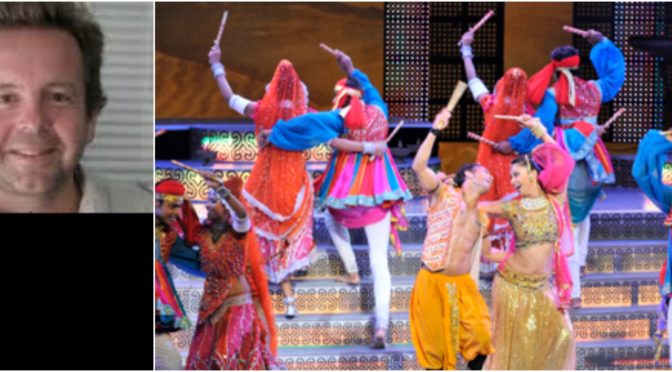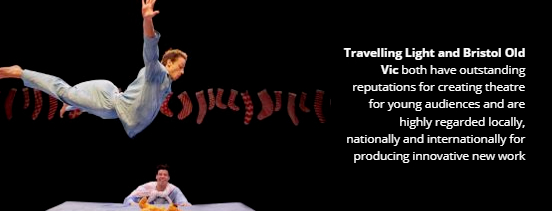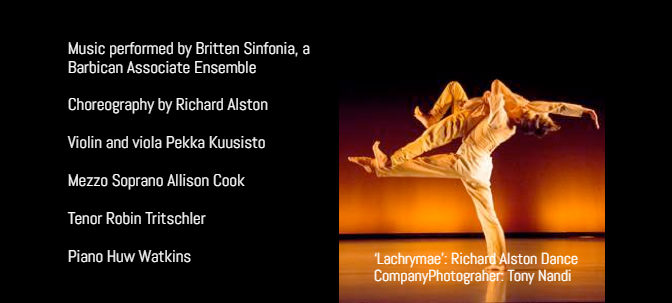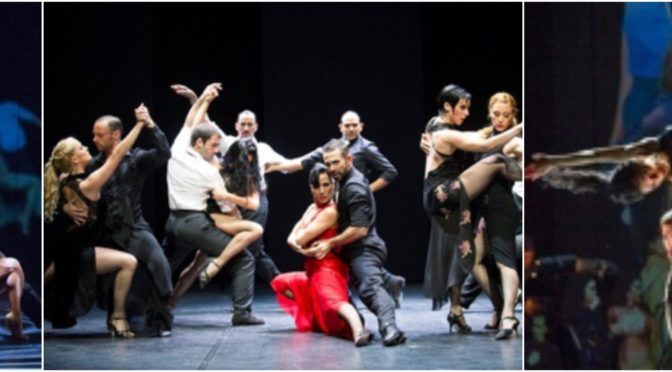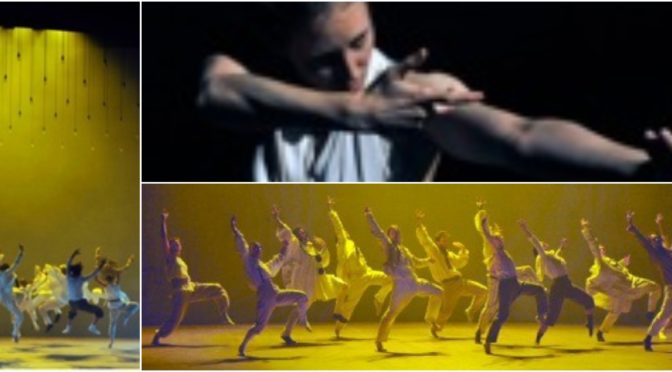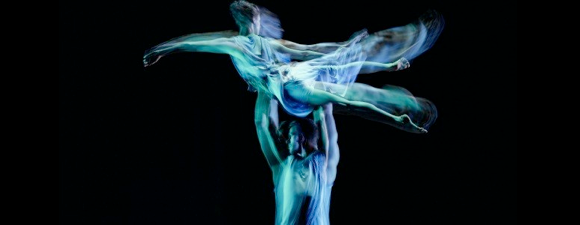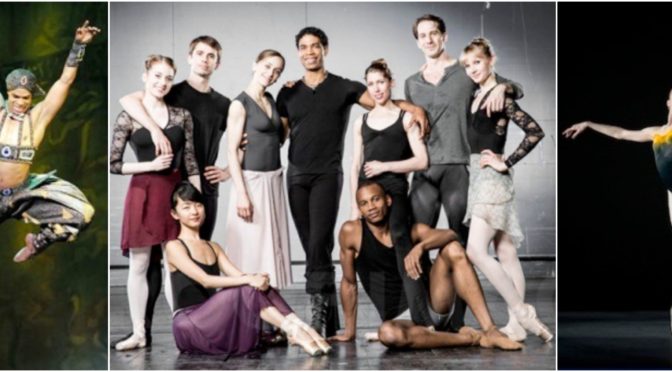In conversation with Toby Gough
It has been a long and successful career as a theatre/musical director. Where and how did you start?
I started as an actor with the National Youth Music Theatre at Edinburgh Festival. I fell in love with the festival. After that I worked in Africa in theatre education. Then in Yugoslavia and Sri lanka using theatre for conflict transformation and commmunity rebuilding. At Edinburgh Festival I have presented shows for twenty years which has been my home ever since.
What has been your inspiration/motivation over the years?
Telling stories, changing lives, staying where the sun shines.
You have worked internationally with artists from different facets of the arts. Which form of art fascinates you most?
The power of stories, the act of theatre, the intangible power of taking people on a journey of the imagination. A voyage of the soul across frontiers, beyond language.
You have had a long working relation with Asian arts, specifically Indian. What in particular in that culture draws you again and again?
In India the culture is ancient, but contemporary, at the same time celebratory, respectful, religious and very rhythmic, full of stories, dance and music. A country that is fascinating, complex and full of contradictions, and a never ending source of inspiration; my father’s family have lived in India for over 300 years so the love for India is in the blood.
Please share with us a couple of your best experiences while working in India or with Indian/Asian artistes.
Children of the sea, a project using shakespeares play Pericles, working with child surivors of the tsunami in refugee camps across Sri Lanka.
Working with Vaibhavi Merchant and Shruti Merchant.
Writing The Spice Trail and performing with members of Tanusree Shankar’s talented company in the Royal Botanic Gardens in Edinburgh Festival lit by fire and lanterns at night.
What brought about Merchants of Bollywood?
The time was right. I was sitting in an Indian restaurant in New Zealand with producer Mark Brady and we saw that the story of the Bollywood Industry was stll not as well known in the western world but there was a fascination for its dance routines and its glamour and positive energy and spirit. Over a chicken tikka and a King Fisher lager, the idea for a Bollywood show was born.
What made you approach Vaibhavi Merchant?
I asked Tanusree who would be the right person for the Bollywood style and she told me that Vaibhavi was the upcoming star on the horizon. I tracked her down in Mumbai and finally persuaded her to meet with me. She then introduced me to Salim and Sulaiman Merchant the music composers and the rest is history.
What was it like working with Vaibhavi Merchant, one the leading Bollywood choreographers?
Working with Vaibhavi is the easiest thing in the world. The show is the story of her life. Her background in Rajtasthan, her choreographies, her grandfather’s life. The show became a personal work for her and her family. Vaibhavi has a large company of dancers to work from and they are very disciplined. We created the show in film studios in Mumbai. What was difficult was for the dancers to learn a whole show as they normally proceed shot by shot, and for them to leave the country on tour. They prefer staying in Mumbai.
In the past you have worked with choreographer Tanusree Shankar from Kolkata and her company.The Spice Trail in 2001, Edinburgh Fringe Festival. Subsequently with Vaibhavi Merchant in Merchants of Bollywood. Both are icons in the Indian dance scene and excel in two different dance styles. What do you think of the two dance styles and how would you relate the experiences?
they are both unique, visionary, prodigious and independent women and both have very different styles of working. Vaibhavi from Mumbai and Tanusree from Kolkata and you can contrast them in the same way you can compare the cities. I value them both. Vaibhavi is filmi desi masala and commercial while grounded in tradition and classical dance and Tanusree is narrative, spiritual and lyrical. Both women command huge respect and love for those who work for them.
Looking at your repertoire, you have also extensively worked with artistes from Cuba. Please share with us the essence of their arts that has given your audience a number of entertaining productions?
They are the melting pot of the Caribbean, born from the romance and passion of Spain and the
blood and rhythm of Africa. Surrounded by Jamaica New Orleans and Puerto Rico the music has kept evolving and this small island has kept creating the most amazing new music in the world. The people throw the best parties on the planet. They have stood up to the world on their own terms and are true survivors.
Lastly, what is your next big project?
I am on tour with the Irish Celtic show in France. Working on The 27 Club in Vienna, Hamburg and Berlin which is a Rock N Roll Show. I am touring with the Buena Vista Social Club and on a big new production from Brazil fusing Capoeira Sambada and Zouk Lambada.
The Merchants of Bollywood is a spectacle of songs, dances and stories. In it avaricious modernity clashes with time tested traditions and in true Bollywood style love triumphs over differences. The musical theatre gushes out with high voltage energy and floor thumping rhythm. Writer/Director Toby Gough explores the cultures past and present – Of India, her cinema and dance heritage through the story of the Merchant family whose choreography in Bollywood spans 3 generations.
The story opens with the familiar struggle between hoary tradition and irreverent modernity. Ayesha Merchant (Carol Furtado), aspires to be a top Bollywood choreographer against the wishes of her grandfather Shantilal Merchant (Joy Fernandes). Her grandfather is her dance teacher whose brush with Bollywood causes him to reject its venality and return to the classical traditions. Differences arise. Ayesha leaves the family home in Rajasthan to pursue her dreams in Bollywood.
What comes about is a journey tracing Bollywood’s history. We travel back in time, starting with dance moves from the suggestive hip sways of today to the venerable golden oldies of yesteryears. A stretch in the first half with its overly glittered costumes, dwell on the verges of a Bollywood night club feel. But the intentions come clear with progression.
Actor Romi Jaspal plays Tony Bakshi, the slimy film director in Bollywood who has no moral qualms in his pursuit for mammon. There is the inevitable fallout with Ayesha who sees through his veneer of glitz. She returns home to Rajasthan to rediscover her roots.
The second half is awash with the garish colours of that most beautiful of Indian states. A profusion of festivals, kites, puppets, men in turbans and handlebar moustaches, bejewelled women carrying earthen pots jostle with each other creating delicious chaos. Melodious tunes set a contrast to the heavy beats and punchy numbers of the first half.
In this half Gough’s sense of humour comes into play through his portrayal of Happy Singh played again by Romi Jaspal. He brings in a glee and a laugh every now and then. His comic lines mocking the many Indian festivals, the hefty moustaches that the men wear in Rajasthan and the whole thing about placing newspaper adverts to arrange marriages, lend relief to the otherwise continuous song and dance sequences. Its a good deviation in the form of dialogue, sharing some local tips instead of just Ayesha talking about her family and Bollywood.
Shantilal passes away and Ayesha vows on the flames of her grandfather’s funeral pier to never depart from her traditions. She sets out to make her name in Bollywood once again but this time her grandfather’s way. Ayesha finally makes it in Bollywood. The Merchants nail their place as top choreographers of Bollywood.
Director Toby Gough says that this idea of a Bollywood show came to him over a Chicken Tikka and Kingfisher lager. True to its conception, The Merchants of Bollywood is a chaat masala of a show, perfect to go with a curry night out!
Protima Chatterjee

